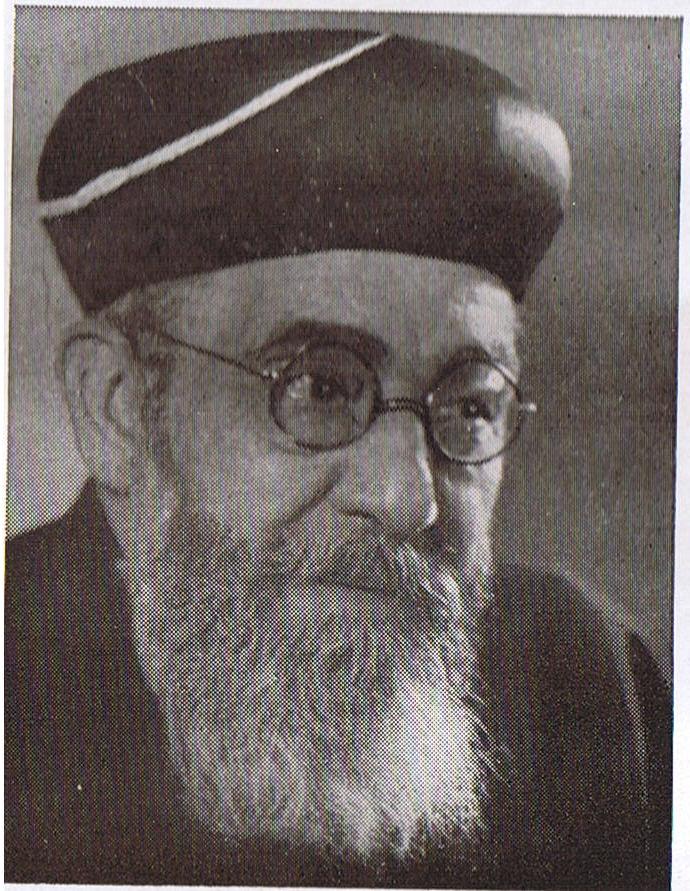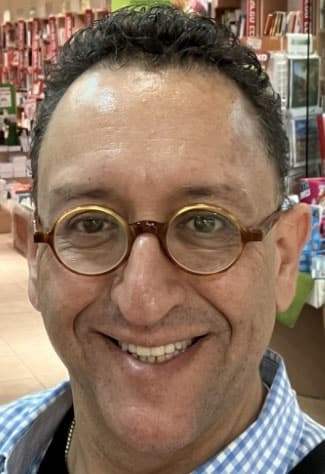 Photo from Wikimedia Commons.
Photo from Wikimedia Commons. “This year we are here, next year in the Land of Israel. This year we are still slaves, next year may we be a free people.” This text appears in most Ashkenazi versions of the Passover haggadah.
In the Sephardic version, the second line is slightly different. It reads, “This year we are still slaves here in exile, next year may we be a free people in the Land of Israel.”
Given the emphasis on “exile vs. Israel” in the Sephardic version, how did Sephardic rabbis in post-1948 Israel understand the haggadah in light of the newly declared Jewish state?
In a pre-Passover address in April 1949, Rabbi Ben-Zion Meir Hai Uziel, who was born in Jerusalem and served as Sephardic Chief Rabbi under Ottoman and British rule, recognized the paradox of saying we are still slaves in exile. Just 11 months earlier, on May 14, 1948, he was in “the room where it happened” when David Ben-Gurion said, “We hereby declare the establishment of a Jewish state in Eretz-Yisrael, to be known as the State of Israel.”
Now as the Sephardic Chief Rabbi of the first Jewish State in close to 2,000 years, Uziel said: “Throughout our lengthy exile, Passover infused us with the hope to be redeemed in our ancestral homeland. By the grace of God and the Israeli military, we are now happy to say: This year we are a free people in the Land of Israel.”
Nissim called Passover “the holiday that most deeply preserved the connection between the Jewish people and the Land of Israel.”
By mimicking the haggadah’s language to reflect the Jewish people’s new reality, Uziel seemed to infer that the change in the Jewish people’s status warranted a change in the haggadah’s text.
Uziel’s successor to the Sephardic Chief Rabbinate was Rabbi Yitzhak Nissim.
In 1958, Nissim called Passover “the holiday that most deeply preserved the connection between the Jewish people and the Land of Israel.” He proclaimed the modern State of Israel as “the beginning of our redemption,” but said that we have “yet to cross the sea into complete freedom.” Different than Uziel’s idealistic Israel of 1949, by 1958, Israel was a deeply divided society, especially along Sephardic-Ashkenazi ethnic lines. Given this reality, Nissim used the metaphor of God “tearing apart” (kara in Hebrew) the sea, saying, “we cannot declare ourselves a fully free people on Passover until we ‘tear apart’ all of these divisions in our midst.”
In 1973, Rabbi Ovadia Yosef replaced Nissim as Israel’s new Sephardic Chief Rabbi. By then a renowned scholar of halachah (Jewish law), Yosef counted among his many published books a detailed commentary to the Passover haggadah titled “Hazon Ovadia.”
Reflecting upon the stanza in the song “Dayenu” that states, “Had God given us the Torah but not brought us into the Land of Israel, that would have been enough,” Yosef writes:
“These words are directed against the secular Zionists who think you can build the Land of Israel without the Torah of Israel. The Torah precedes the Land of Israel in importance, because the Land of Israel without Torah is no better than living in the diaspora. Indeed, it is preferable to stay in the diaspora as an observant Jew rather than angering God by living a secular lifestyle in the Land of Israel.”
In a radical departure from his Sephardic predecessors, Yosef demystifies the existence of Israel and posits that the secular orientation of Zionism actually angers God. Yosef’s creative reading of “Dayenu” deems it preferable for the Jewish people to have stayed “slaves in exile” as religiously observant Jews rather than being a “free people in the Land of Israel” in a Jewish state with a decidedly secular orientation.
As we transition from Passover into Israel’s 70th anniversary, Israel’s first three Sephardic Chief Rabbis inspire a new set of “Four Questions”: Are those of us living in exile still in slavery? Does Jewish independence in Israel automatically mean Jewish emancipation? Is a polarized Israel a true expression of freedom? Can secularism and religiosity coexist in a Jewish state?
Perhaps we should have another seder on Yom HaAtzmaut to ponder those questions.
Rabbi Daniel Bouskila is the director of the Sephardic Educational Center.






















 More news and opinions than at a Shabbat dinner, right in your inbox.
More news and opinions than at a Shabbat dinner, right in your inbox.